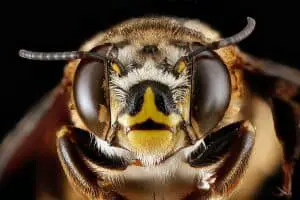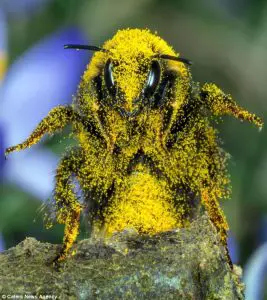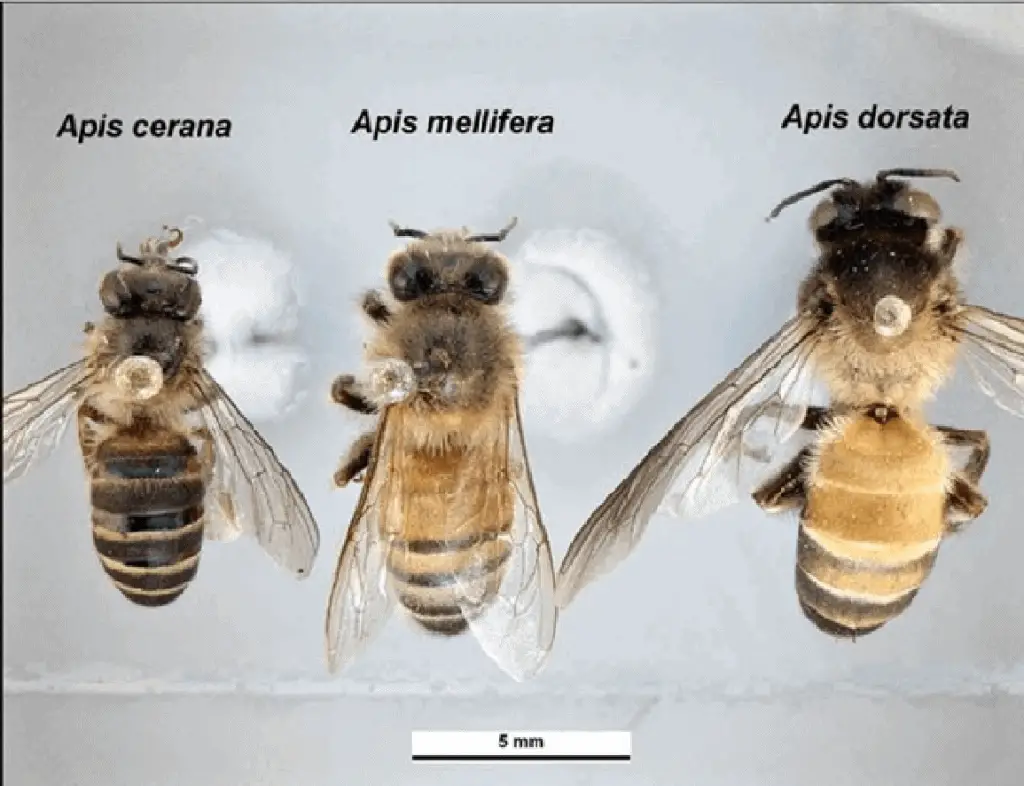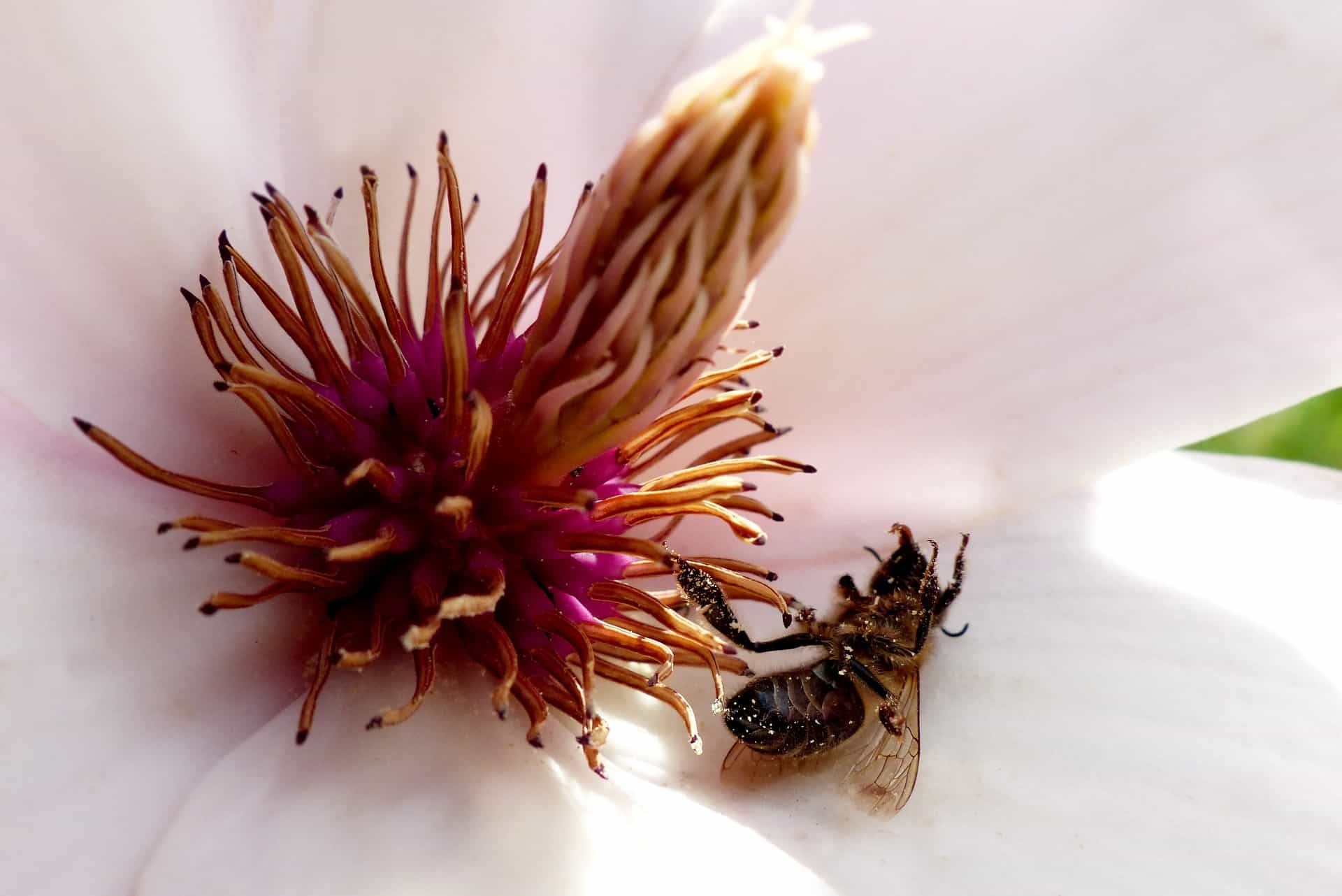Feel like a bee
Put your coffee & emails away and slip into your new super body!
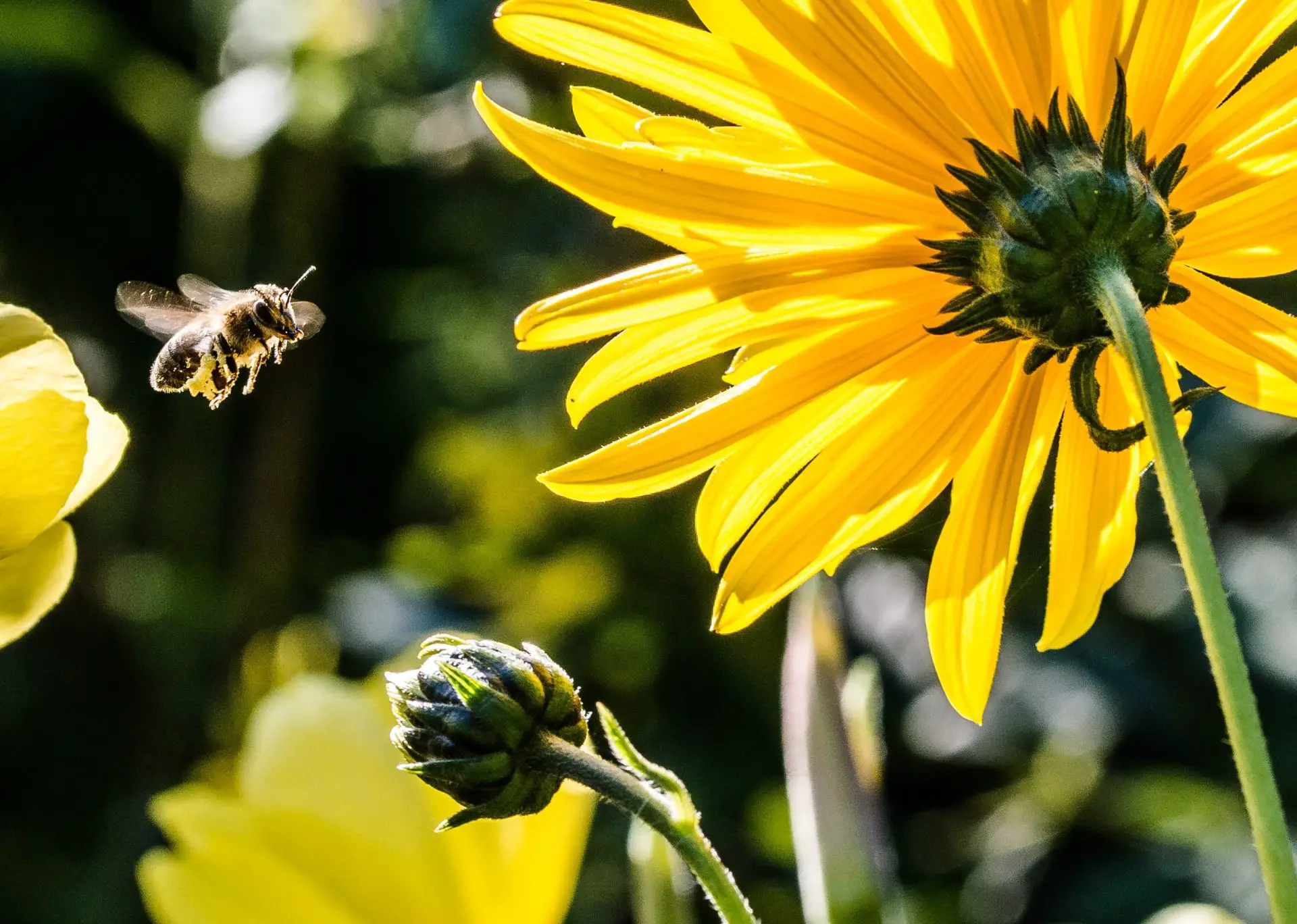
A glance at the anatomy of a bee
The legs and hairs of a bee:
Bees indeed do have 6 legs with hairs on them. The bristle-like hairs on the inner side of the hind legs are arranged in ten regular transverse rows. The middle legs are pulled through between these pollen combs of the hind legs, so that the pollen gets caught in the bristle-like comb. A single, longer hair in the lower part of the capitulum holds the pollen that has accumulated. By further replenishment the honeybee forms its “panties” and knocks these with its middle legs firmly, so that with the flight nothing is lost. The weight of both panties is about 8 – 20 mg depending on the type of pollen. Before the panties are filled the bee flies to up to 80 different flowers. If you wonder why bees carry pollen around, read our article What is pollination?
The tongue of a bee has no taste buds and extends far beyond the end of your jaw. Bees taste with other specialized hairs that contain receptor cells. Each of these cells is calibrated to a specific substance. The hairs are located around your mouth, your antennae and at the ends of your legs. The front legs of a bee provide it with information about whether it is going to eat something or not.
The eyes of a bee:
Instead of two eyes, bees have five eyes. On the one hand they have compound eyes, also called compound eyes. Facet eyes are a composition of many small, hexagonal individual eyes, with which the bees can perceive up to over 300 images per second. For comparison, a human being can only see a fifth of them in one second. With the compound eyes the bees can see shapes, patterns and colours as if they were looking through a sieve. The individual impressions are then combined in the brain to form an overall picture of the environment. In addition, bees see colours differently. Red looks like black and the three “primary colours” are blue, green and ultraviolet. However, bees only see colours when they fly slowly enough. Above a certain speed they only see grey.
Bees also have three point eyes, also called ocells. They are immobile and centered on the head. Through them bees can distinguish light and dark.
How to feel like a bee? We hope that you can now put yourself in the place of a bee and would be happy if you have read up to here.
SOURCES:
- Tautz, Jürgen: Der Bien. Superorganismus Honigbiene, June 2010
- Frost, Natasha: What is it like to be a bee? December 06, 2017
- https://www.sueddeutsche.de/wissen/biologie-bienen-schmecken-mit-den-beinen-1.1880156

